Residential Pipes and
Freezing Conditions
Residential pipes can freeze in as few as six to eight hours, and damage from frozen and burst pipes can be catastrophic if the leaking pipe is not detected quickly. Homes may have plumbing and water supply pipes of various materials that respond to the added stress of freezing temperatures differently, and appropriate insulation can be critical in preventing freeze damage.
Scroll down to learn how piping and insulation materials withstand freezing temperatures.
Using This Guide
Scroll down through this home and hover over each room to learn about a material that might be used in the piping or insulation there. Click on the room to automatically scroll down to more information about the material and then come back and continue exploring the house.
This infographic works best with a desktop computer.





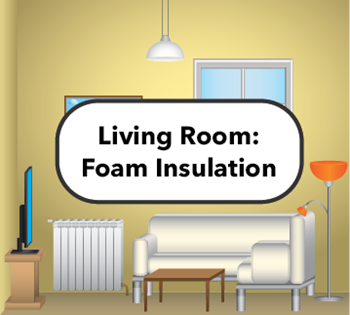



Attic: Copper Water Supply Pipes
Copper tubing is a common feature of residential plumbing and is generally durable and corrosion resistant. It tolerates both hot and cold water, as well as high water pressure, and it can be recycled if it fails. It’s too rigid to use in tight spaces, and it’s particularly susceptible to freezing temperatures.
Ice blockages may form within the pipes, causing them to burst as the ice growth applies high pressures to the water supply.
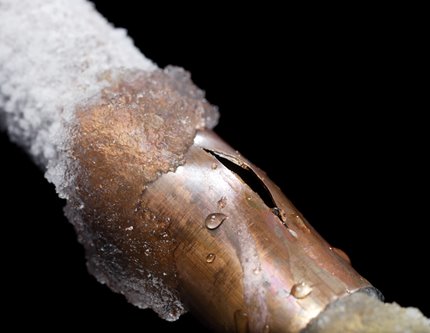
Freezing temperatures caused this copper pipe to burst.
Bathroom: PVC Pipes
Polyvinyl chloride (PVC) pipes are strong and durable enough to handle high water pressure, but they cannot withstand hot water. They’re most commonly used for cold water supply lines or wastewater purposes, including sinks, toilets, and shower drains. Their smooth inner linings prevent sediment buildup, so they are resistant to blockages. However, it’s still possible for ice blockages to develop during freezing temperatures, which might damage the pipe.
PVC pipes are less likely to burst than metal pipes, but it’s still possible, particularly if the pipe travels through an exterior wall.
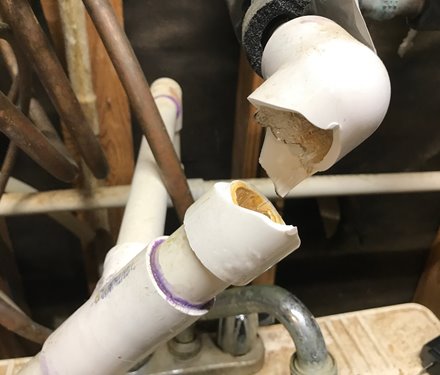
This PVC pipe burst after sustaining an ice blockage.
Landing: Pipe Insulation
Insulation is designed to trap warm air within the interior of a home, rather than allowing it to escape to the exterior where it will be cooled. Insulation can help prevent pipes from freezing, and different types of insulation provide varying levels of resistance to heated airflow. The amount and type of insulation required for a home depends on the local climate, type of heating and cooling system, and each part of the house. Pipes may be wrapped in foam, fiberglass, or rubber tubing that provides additional insulation.
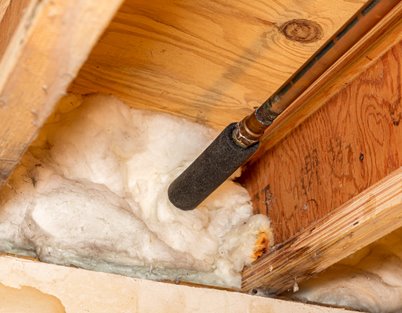
Insulation is a key component in preventing burst pipes during freezing conditions.
Bedroom: Cellulose Insulation
Cellulose insulation is an organic material typically consisting of 75% to 85% recycled paper fiber – often recycled newspaper. The other 15% to 25% is a fire retardant like boric acid. It can be installed as blown-in, loose-fill, dense pack, or wet apply materials. Cellulose insulation is usually installed in horizontal spaces, like the ceiling between the attic and the bedroom or other rooms beneath.
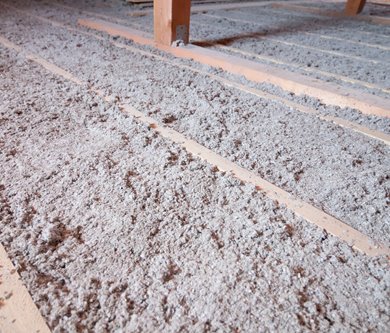
This cellulose insulation has been installed in a floor.
Living Room: Foam Insulation
There are several types of foam insulation available for both new construction and filling in leaks in existing construction. Injection foam can be injected into an existing cavity to improve the insulation of an existing home, while spray foam is sprayed into an open cavity for use in new construction. Light and pliable open cell spray foam shifts as it settles, while dense and heavy closed cell spray foam is more resistant to weathering and temperature fluctuations. Rigid foam board can be placed inside unfinished walls, floors, or ceilings.
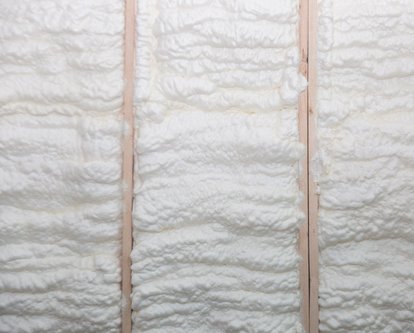
This spray foam was used in new construction to insulate the home.
Staircase: Fiberglass Insulation
Fiberglass insulation consists of plastic reinforced by glass fibers for additional strength and insulation capacity. It may come in pre-shaped blanket batts and rolls designed to fit into the standard width between wall studs, attic trusses, rafters, or floor joists. Fiberglass insulation may also be blown-in, which is particularly suitable to fill irregularly shaped spaces.
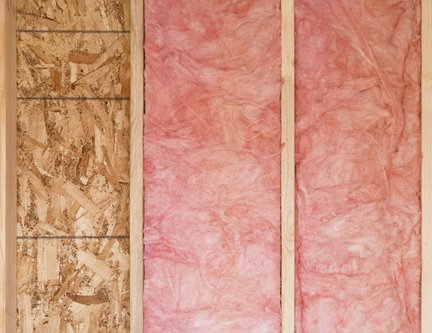
This is an example of a blanket batt of fiberglass insulation.
Kitchen: PEX Water Supply Pipes
Polyethylene (PE) material can become a high-density plastic through chemical or physical reactions. This creates cross-linked polyethylene (PEX) plastic.
PEX tubing was developed as a more flexible alternative to metal pipes. PEX piping can handle high water pressure and can weave through walls, ceilings, basements, and crawlspaces. The pipes themselves are usually color-coded, red for hot water and blue for cold, so plumbers can easily identify and organize the pipes they’re working with.
These pipes may be strong and flexible, but they can still fail during freezing conditions, usually due to pressure buildup caused by ice blockages. The tubing may “mushroom” out before finally splitting and gushing water.

This PEX pipe mushroomed after two cycles of freezing and thawing weather.
Basement: Cast Iron and Galvanized Steel Pipes
Cast iron or galvanized steel pipes are most commonly found in early 20th Century homes and are rarely used in new construction. They’re durable and heat resistant, but cast iron and galvanized steel are both prone to rust and corrosion. They’re particularly susceptible to cracking or splitting when exposed to freezing conditions.
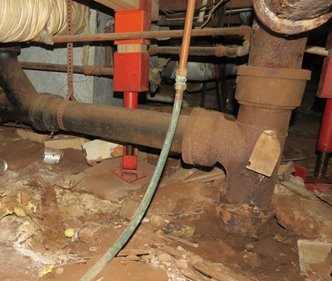
This home’s plumbing combines copper and cast iron pipes.
ABOUT DONAN
Submit an assignment to get your tough questions answered by Donan engineers using the scientific method. Want to learn more about the process? Contact us at 800-482-5611 or donan@donan.com.
Submit an Assignment
Opens in a new window.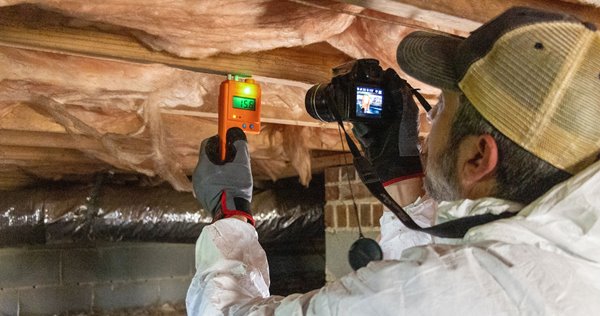

GOING FURTHER
Winter weather can pose a risk to many components of a home, including the roof, particularly when snow begins to accumulate. Click on the button below and fill out a short form to learn how heavy snow loads and ice dams can affect a residential roof.